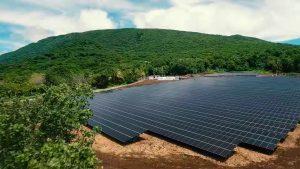 Since Tesla has formally acquired SolarCity, it isn’t wasting time showing exactly what the combined solar power company can perform. Tesla showed us that it’s running the area of Ta’u (in American Samoa) on a solar power microgrid that, at 1.4 megawatts, can cover “almost 100 %” of electrical needs. It’s not only the 5,328 solar power panels which are key — it is the 60 Tesla Powerpacks that provide 6 megawatt-hrs of solar energy storage. While Ta’u is generally very sunny, the packs will keep it running for 3 days without sunlight. They do not need to bother about an overcast day resulting in blackouts.
Since Tesla has formally acquired SolarCity, it isn’t wasting time showing exactly what the combined solar power company can perform. Tesla showed us that it’s running the area of Ta’u (in American Samoa) on a solar power microgrid that, at 1.4 megawatts, can cover “almost 100 %” of electrical needs. It’s not only the 5,328 solar power panels which are key — it is the 60 Tesla Powerpacks that provide 6 megawatt-hrs of solar energy storage. While Ta’u is generally very sunny, the packs will keep it running for 3 days without sunlight. They do not need to bother about an overcast day resulting in blackouts.
The switch to solar, which required a full year to accomplish, has both its lengthy ecological and immediate practical benefits. Like many remote communities, Ta’u formerly needed to operate on diesel generators. That burns 300 gallons of fuel each day, that is neither eco-friendly nor cheap. Solar eliminates the pollution, obviously, it saves the price of getting to continuously buy and ship barrels of diesel. And crucially, it possesses a more reliable electrical source. Locals formerly needed to ration power (say, if your diesel shipment wasn’t coming right away) or accept periodic outages. Now, they are able to assume they’ve got power on all occasions.
The work was funded through the American Samoa Economic Development Authority, the U.S. Ecological Protection Agency and also the Department of the Interior.
The machine is anticipated to offset using greater than 109,500 gallons of diesel each year.
Ta’u is clearly a perfect test situation. On the top of their paradise-like weather, you will find just over 700 residents with relatively modest power needs. It would need much more capacity to accommodate a complete city, particularly in climates where cloudy days tend to be more commonplace. However, it might still function as a good example. Tesla’s mission would be to wean the planet from non-renewable fuels, which shows that it is realistic goal in some areas the globe.




1 Comment
Comments are closed.